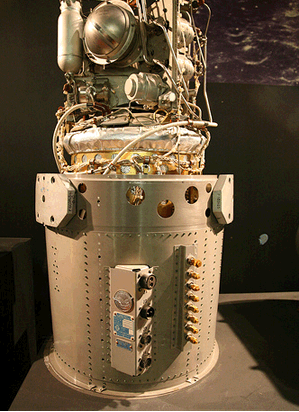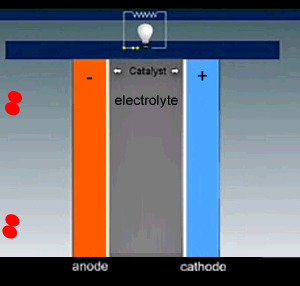Fuel cells have been around for many years and were widely used in the space program during the 1960's. A fuel cell used to provide electricity for the Apollo space program is shown on the right.

Hydrogen is fed into the cell and flows over the negative electrode where the molecule separates into two hydrogen ions(protons) releasing two electrons. The electrons and protons flow through the cell via separate pathways. The electrons flow through an external circuit while the protons flow through a special membrane that allows only positive ions to flow through it. On the other side, at the positive electrode, the oxygen molecule is separated into two oxygen atoms. As electrons arrive, the oxygen atoms react with the hydrogen ions forming water.
Note how the oxygen and hydrogen gases are kept apart in a fuel cell.


During daylight, the solar panels collect solar energy and convert it directly into electricity. This electricity can be used to power the colony and to also drive the electrolysis of water into hydrogen and oxygen gases.
At night when the solar panels do not function stored hydrogen and oxygen are reacted in fuel cells to generate electricity.
1) Complete the chemical equation below that occurs during the electrolysis of water.
2H2O + electrical energy => ______ + ________
2) Complete the chemical equation below that occurs during the discharge of the fuel cell.
______ + ________ => 2H2O + ____________
3) Is water recycled? Explain how using the word equations in questions 1. and 2. above..
4) Using the terms , solar energy, chemical energy and electrical energy, explain how electricity is generated at night.
5) Describe other uses for the gases hydrogen and oxygen.
View the video on the right. It shows the power of a hydrogen, oxygen reaction.
What are the types of energies released when oxygen and hydrogen are mixed together and ignited?
How does this reaction differ in comparison to the reaction taking place in the fuel cell?